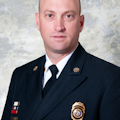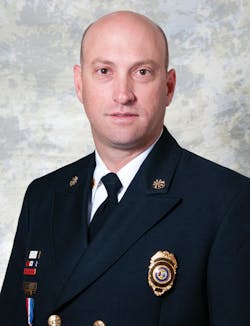Fire Politics: Limiting Risk to Civilians & Firefighters Alike
Tragic fires always have lessons for us to learn. To do so, we must examine the facts and analyze the decisions that were made. These decisions include those made by citizens, firefighters and all stakeholders involved in the process.
Recently, I had the humbling experience to walk where firefighters risked their lives and where Don and Sandy Pyle perished along with their four grandchildren— Charlotte, Alexis, Wesley and Kaitlyn—in a home fire on Jan. 19. This walk occurred in Annapolis, MD, very near the one-year anniversary of this fire. I was invited to walk inside the children’s playhouse, which is about all that is left on the site, because as Sher Grogg, Don’s sister, said standing on the site, “It was too much to handle to keep coming back here so we had the burned house cleared.” The vacant lot, with the playhouse still standing, creates one of those sites where you “feel” the tragedy just by standing there. I will never forget the experience, and I am so proud of Sher for sharing her story and becoming an advocate who will save lives because of it.
As I wrote this article, I received an email from Dr. Burton Clark, a staunch advocate for fire sprinklers, related to a Firehouse.com article about a mansion that was equipped with fire sprinklers and yet burned to the ground. How do we explain this, he asked? Simple, the man and his dogs escaped, which is exactly what the fire sprinkler in a home is designed to do, allowing time to escape.
States with risks ahead
We can safely say that the actions of fire departments save lives and property daily. We can also safely say that the adoption of building codes in every state and many local communities also saves lives and properties daily. However, there are 48 states in this country that have not adopted the minimum building and fire codes.
There are also 12 states that passed laws that prohibit local and state governments from adopting codes that include the provision of residential fire sprinklers. Florida and Tennessee have adopted laws at the state level that require local governments to jump through extra hoops to adopt requirements for residential fire sprinklers.
What does this mean to fire and life safety? It means that buildings built that exclude basic life safety requirements will claim the lives of citizens and firefighters for years to come. Let’s consider those 48 states that don’t require residential fire sprinklers. There will be more than 700,000 houses built in 2016 without built-in fire protection. The 12 states that prohibit the local and state fire and building officials from requiring fire sprinklers will be responsible for nearly 400,000 of those homes constructed.
States limiting risks
There are two states that are leading fire and life safety efforts. Thank you to California and Maryland for recognizing the minimum residential code. These two states will ensure their approximately 91,000 homes will be built to the International Residential Code. This progress wasn’t easy and hasn’t been without challenge.
Recently, the political action of Maryland’s fire service, coupled with support from fire and life safety advocates, helped ensure that the minimum building and fire codes remained adopted statewide. Ill-informed lawmakers in Maryland recently introduced House Bill 0119, which would have allowed counties to “opt out” of the fire sprinkler requirements and jeopardize their statewide adoption.
Thanks to the Maryland State Fireman’s Association, the Maryland Fire Chief’s Association, the National Fallen Firefighters Foundation, Common Voices, the Phoenix Society, the NFPA and the Capital Region Fire Sprinkler Association (NFSA Chapter), this law—a law that would have jeopardized thousands of houses being protected—was not adopted. This means that lives will be saved for years to come and the risk to firefighters will be reduced.
The dedicated efforts of many, many committed individuals and organizations came together to educate citizens and policymakers on the importance of fire protection and how fast fire spreads in the modern environment. Fire is fast, fire sprinklers are faster, and firefighters are required for all.
Not only are California and Maryland new homes protected, so are all future disaster housing units provided by FEMA. The actions of many dedicated individuals over the past 10 years have come to fruition. The next major disaster that requires temporary housing from FEMA will include mobile homes equipped with special smoke alarms and residential fire sprinklers.
Be a difference-maker
Keep up the efforts. If you are in a state that is prohibiting the requirements of minimum fire and life safety features, get involved with your associations and coalitions that have a strategy to make changes. Our involvement can be the difference-maker!
About the Author

Shane Ray
SHANE RAY has been a volunteer firefighter since 1984 and a career firefighter since 1994. He has also served as a mayor for six years and the Tennessee Fire Chief’s Legislative Chairman for 12 years. Ray’s love for politics started as fire chief of the Pleasant View Volunteer Fire Department in Tennessee, where he served 13 years. He then served under Governor Nikki Haley in South Carolina as superintendent and state fire marshal. He currently serves as the president of the National Fire Sprinkler Association and is a lifetime member of the Pleasant View Volunteer Fire Department. Throughout his career, he has been committed to public service with a “Do It Different” mentality and that all stakeholders are important.
